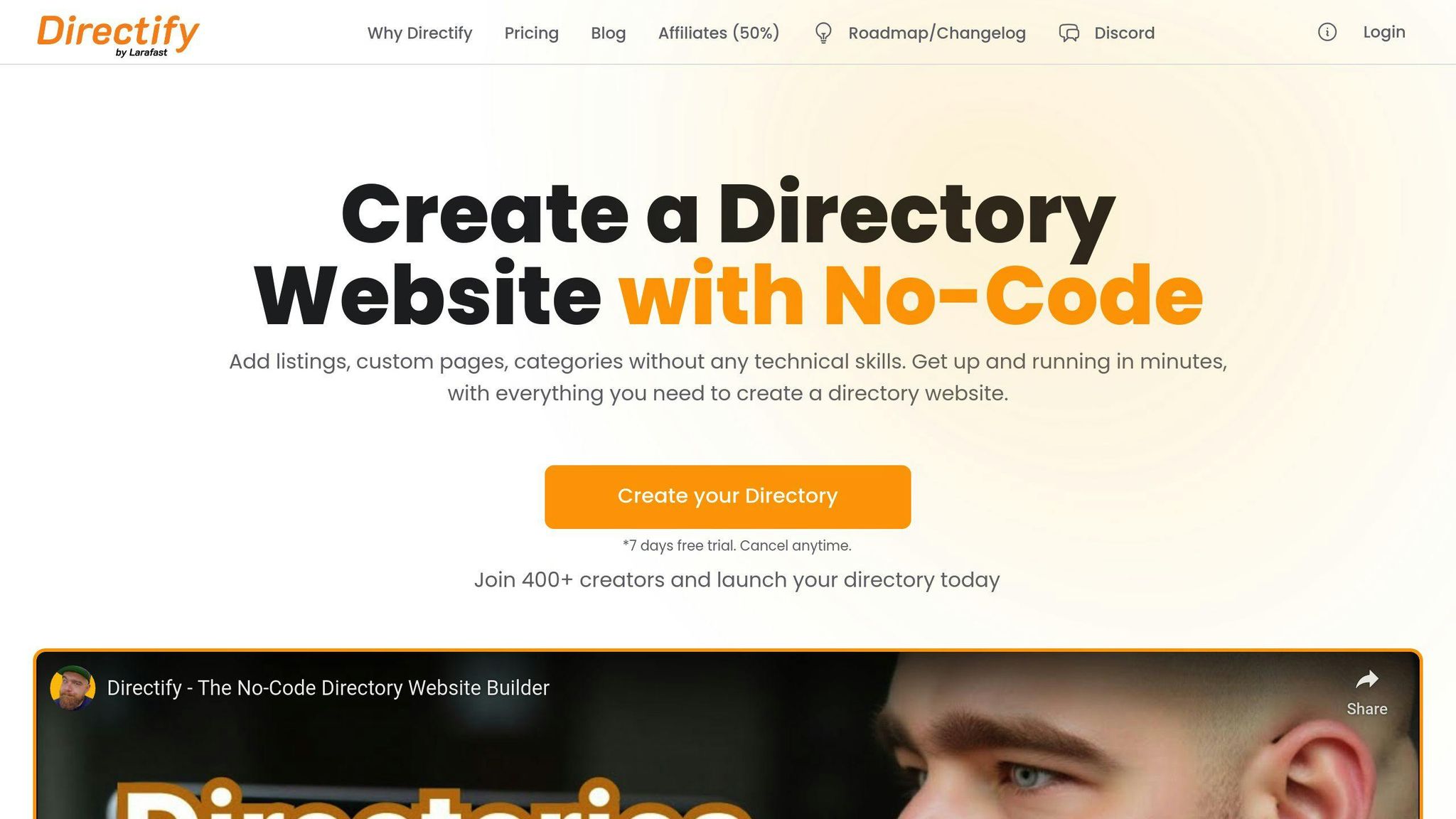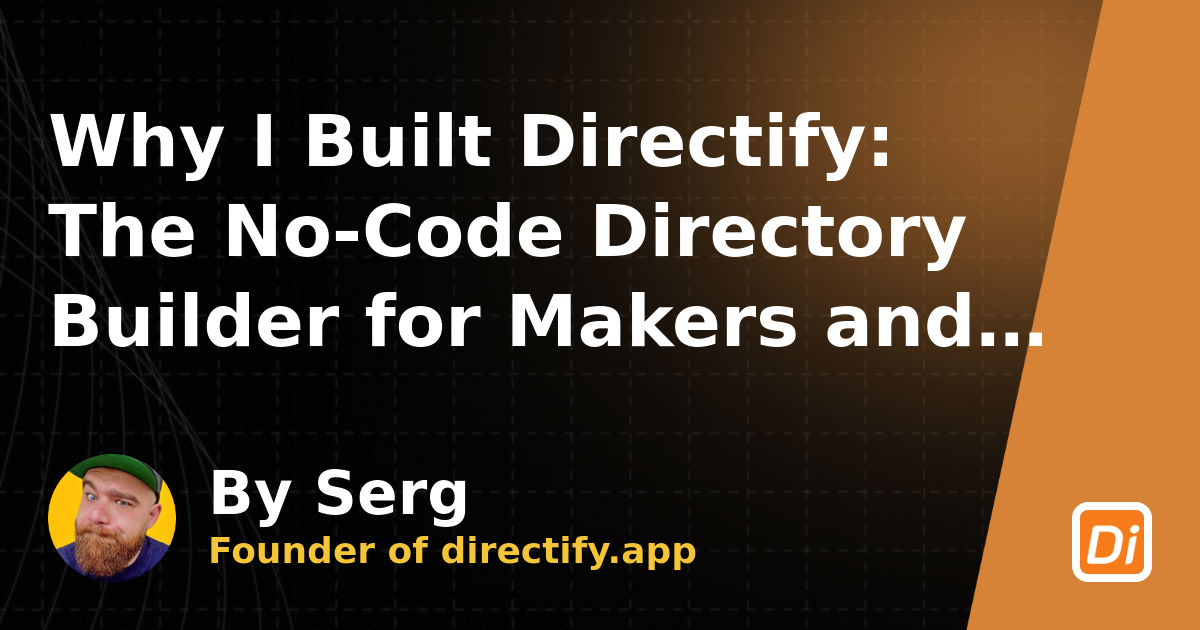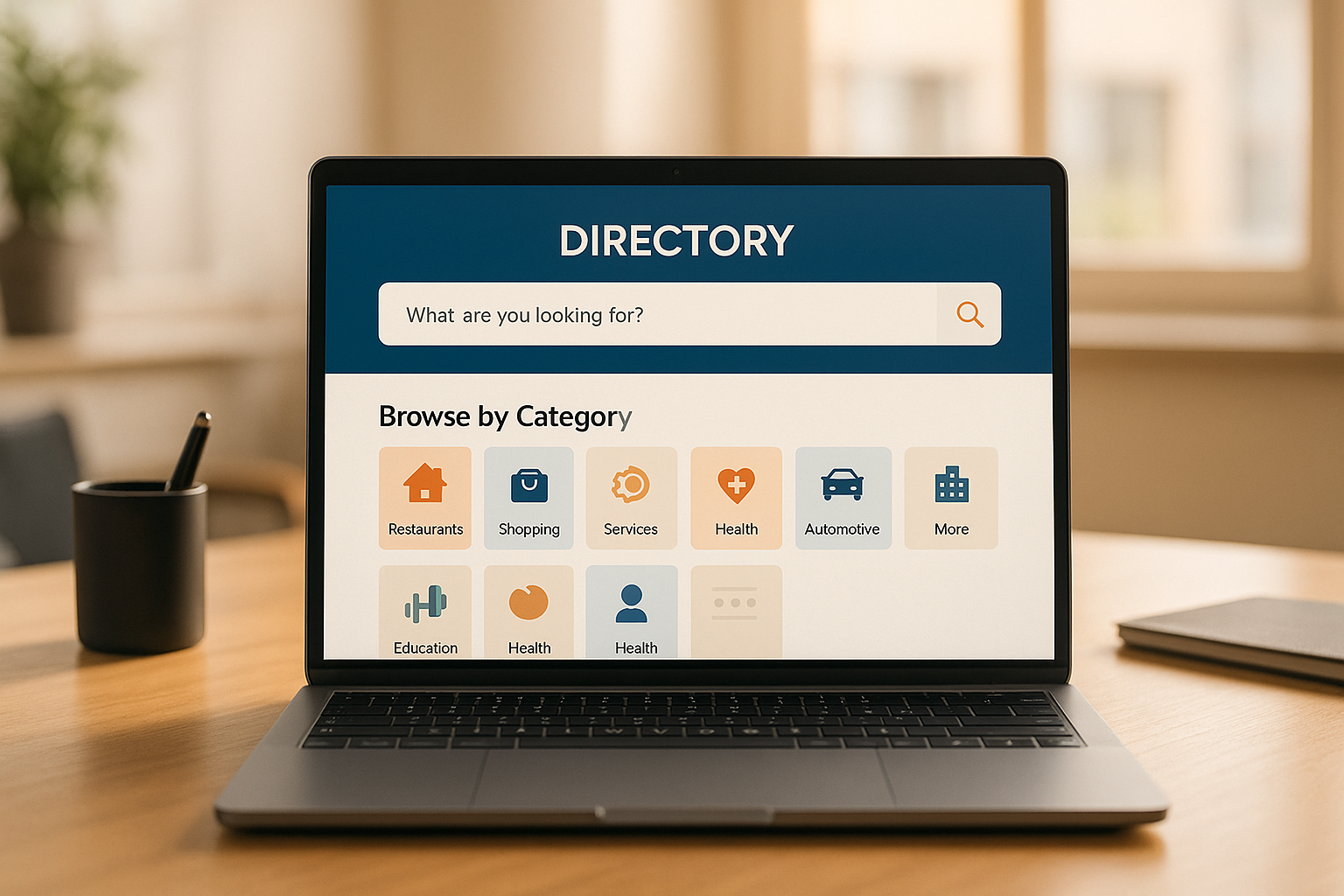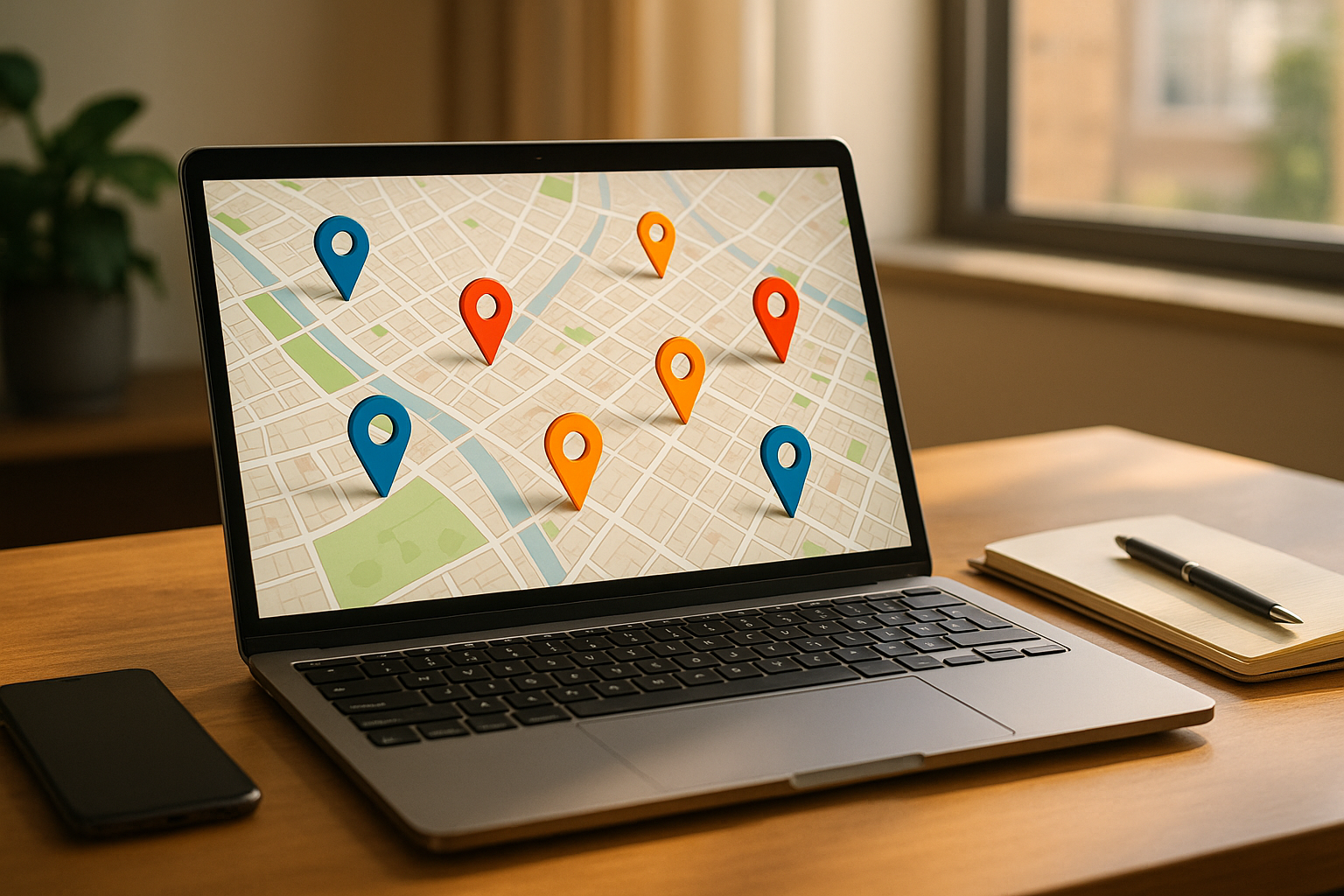
Want to launch a directory website in just one day? Here's how you can do it without writing a single line of code. Using no-code directory builder platforms like Softr, Bubble.io, Webflow, or Directify, you can create a fully functional directory site in 24 hours. Follow these steps:
Choose a no-code platform: Pick tools like Directify for simplicity or Webflow for advanced customization.
Set up features: Add categories, listing submission forms, and payment options for monetization.
Optimize for SEO: Use keywords, meta descriptions, and sitemaps to improve visibility.
monetization features your site: Offer paid listings, featured placements, and ad space.
Test and launch: Ensure navigation, payments, and mobile responsiveness work perfectly.
| Platform | Best For | Key Features | Price |
|---|---|---|---|
| Directify | Simplicity & speed | Unlimited listings, paid listings | $24.5/month |
| Webflow | Advanced design | Full design control, CMS features | Starts at $14/month |
| Bubble.io | Custom functionality | Advanced database capabilities | Free to start |
| Softr | Quick setup | Data handling, pre-built templates | Free to start |
With this guide, you can have your directory site running by the end of the day. Ready to start? Let’s dive in!

Choosing the right platform is crucial for building a directory website efficiently. Your platform will determine how easily you can implement key features and start accepting listings.
When comparing no-code platforms, focus on essential features that will support your directory's functionality:
| Feature | Importance |
|---|---|
| Listing Management | Simplifies how users find and add listings |
| Custom Domains | Boosts your branding with a professional URL |
| SEO Tools | Helps improve visibility through built-in optimization features |
| Payment Integration | Enables monetization via paid listings |
Also, prioritize platforms with fast load times and dependable uptime to enhance the user experience and improve search rankings [1].
Directify is a user-friendly option offering unlimited listings, SEO tools, and paid listing management. At $24.5/month for the Single plan, it includes:
Unlimited listings and categories
Built-in SEO tools
Customizable themes
Paid listing management
Team collaboration features
Mobile-friendly design
If you need more customization, Webflow allows advanced design control but may take more time to set up. Bubble.io offers powerful features but has a steeper learning curve.
Pro tip: Match the platform to your goals. If speed and simplicity are priorities, Directify is a great choice. For more control and flexibility, Webflow or Bubble.io might be better, though they require more effort.
Pick a platform that’s easy to get started with but can grow with your needs. Once you’ve selected your platform, you can begin setting up the core features of your directory to engage users effectively.
When you’re short on time, prioritize features that enhance functionality and keep users engaged.
A clear structure is key for easy navigation and better SEO. Use a pyramid-style hierarchy for your categories:
| Level | Example |
|---|---|
| Main Categories | Services, Products, Locations |
| Subcategories | Services → Plumbers → Emergency Plumbing |
| Listing Details | Business info, contact details |
Make sure each category includes:
Descriptive titles for clarity
Meta descriptions to boost search visibility
Filter fields to refine searches
Images to make listings visually appealing
Set up user-friendly submission forms that collect:
Business details and descriptions
Contact and location information
Category selection
Media uploads like photos or logos
You can also offer different pricing options:
Basic free listings (e.g., 30-day duration)
Paid premium listings with better visibility
Extended duration options for long-term visibility
Include essential pages such as Homepage, About, Contact, Terms, and FAQ. Pay attention to:
Consistent branding across all pages
Clear navigation and an easy-to-use search bar
Readable fonts (at least 16px) and high-contrast colors
Fast-loading images to improve user experience
Since over half of web traffic comes from mobile devices, prioritize a mobile-friendly design. Test your site navigation with real users to ensure it’s intuitive before going live with listings.
Once your website is set up, the next step is to focus on improving its search engine visibility.
Search engines are a major source of traffic for directory websites, so setting up basic SEO is a smart move - even if you're working on a tight timeline. Here are a few steps to boost your site's visibility quickly.
Start by finding relevant keywords for your niche using tools like Google Keyword Planner. Then, structure your keywords to align with common search patterns:
| Content Type | Keyword Pattern | Example |
|---|---|---|
| Homepage | [location/niche] + directory | "Boston restaurant directory" |
| Category Pages | [category] + in + [location] | "Italian restaurants in Boston" |
| Listing Pages | [business name] + [category] + [location] | "Mario's Pizza Italian Restaurant Boston" |
Incorporate these keywords into your titles, meta descriptions, and URLs to improve your site's ranking. Many no-code platforms make this easy by providing built-in fields for meta information.
Most no-code platforms will automatically generate a sitemap for your site. Submit this sitemap to Google Search Console to speed up the indexing process.
Rich snippets, created using schema markup, can make your search results stand out by showing details like ratings, pricing, and business information. Tools like Google's Structured Data Markup Helper can guide you through adding schema markup to your site.
Remember, studies indicate that 75% of users don't look beyond the first page of search results [2]. By following these steps, you can quickly set up your site to perform well in search rankings - even within a 24-hour launch window.
Once your SEO basics are covered, you'll be ready to dive into monetizing your directory website.
During your 24-hour launch window, these quick monetization strategies can help you start earning revenue immediately.
Introduce tiered pricing plans with clear benefits for each level:
| Listing Type | Price Range | Features |
|---|---|---|
| Basic | Free | Basic info |
| Premium | $24-49/month | Better visibility |
| Featured | $99-149/month | Top placement |
Choose a payment gateway that works seamlessly with your platform to accept payments right away. Key features for premium listings should include:
Highlighted positions in search results
Multiple high-quality images
Detailed business descriptions
Direct contact buttons
Links to social media profiles
Once you've launched your paid listings, you can also explore adding advertising options to further grow your revenue.
Placing ads strategically on your site can deliver strong results:
| Ad Placement | Expected CTR | Best Ad Type |
|---|---|---|
| Category Headers | 2.8-3.5% | Banner Ads |
| Search Results | 1.9-2.4% | Text Ads |
| Listing Pages | 1.2-1.8% | Contextual Ads |
Google AdSense is a quick and simple way to start earning from ads. Set up an account, add their code to your site, and position ad units in high-traffic areas. To maintain a good user experience, keep ads to a maximum of 3-4 per page.
Additionally, offer 'urgent' or 'featured' tags for listings. These options can bring in extra revenue by allowing businesses to stand out and attract more attention from potential customers. This small feature often proves highly appealing to listing owners.
Thorough testing helps identify and fix issues that could affect your site's performance and user experience.
Ensure your directory's navigation works seamlessly across all devices and browsers. Focus on these key areas:
| Testing Area | Key Elements to Check | Success Criteria |
|---|---|---|
| Main Navigation | Menu items, breadcrumbs | Clear structure, working links |
| Search Function | Results relevance, filters | Accurate and relevant search results |
| Mobile Response | Layout, touch elements | Responsive design, functional touch elements, no scrolling horizontally |
| Loading Speed | Page load times | Pages load within 3 seconds |
If your pages take longer than 3 seconds to load, compress images and streamline your code for better performance.
For usability testing, simulate real user interactions. Test core functions using real or sample data:
Look up specific businesses.
Explore categories.
Submit a new listing.
Complete payment transactions.
Use the contact feature for listed businesses.
Verify that all features, including payment systems and premium listing options, work as intended. A structured testing process can help ensure smooth functionality:
| Feature Type | Test Actions | Expected Outcome |
|---|---|---|
| Listing Submissions | Submit test listings | Forms validate correctly, and notifications are sent |
| Payment Processing | Conduct test transactions | Smooth payment process, receipt generation |
| User Accounts | Register and log in | Account creation and password reset work properly |
| Contact Forms | Submit inquiries | Messages are delivered, and auto-responses are sent |
Use tools like SSL Labs to confirm your security settings are properly configured, especially if your directory handles payments or sensitive user data.
For SEO preparation, check these items:
Submit your sitemap.xml to Google Search Console.
Review meta tags and descriptions.
Ensure rich snippets appear correctly.
Test internal links and redirects.
Plan to launch during quieter times, like midweek mornings, to minimize potential disruptions. Have a technical expert on standby to handle any issues that might come up during the launch.
Once everything is tested and optimized, your directory site is ready to go live and welcome visitors.
With no-code platforms and this guide, you can have a fully functional directory website up and running in just 24 hours - no coding skills needed.
The key to success lies in choosing the right platform and focusing on must-have features. Tools like Softr, Bubble.io, and Webflow offer everything you need while giving you room to grow as your site evolves.
Here’s a simple timeline to guide your launch:
| Time of Day | Tasks to Complete |
|---|---|
| Morning | Set up and configure your platform |
| Afternoon | Add features and upload content |
| Evening | Test everything and go live |
Make sure your site includes features like easy navigation, smooth listing submissions, and monetization options. Don’t forget to optimize for search engines by including keywords, meta descriptions, and a sitemap.
Track your progress by monitoring key metrics such as:
Daily visitors
Number of submitted listings
User engagement
How often search features are used
If you're aiming to launch within 24 hours, focus on platforms that are easy to use and come with features like listing management and payment options. Here are some popular choices:
| Platform | Highlights |
|---|---|
| Webflow | Sleek, professional designs with CMS-powered listings |
| Bubble.io | Offers advanced database capabilities |
| Softr | Quick to set up and great for handling data |
| Directify | Tailored for directories, includes monetization tools |
Most of these platforms offer free trials, so you can test them before committing. For directory-focused needs, Directify is a strong option, starting at $24.5/month. It includes unlimited listings and built-in monetization features.
Launching a directory website involves picking a niche, choosing a no-code platform, and setting up essential features like categories, submission forms, and payment systems. Once your site is ready, you can monetize it in several ways.
Steps to get started within 24 hours:
Pick a niche: Focus on a specific audience or market.
Select a platform: Choose one that aligns with your comfort level and needs.
Set up core features:
Directory categories
Submission forms for users
Search functionality
Payment processing
"Organizing categories effectively ensures users find what they need quickly, improving engagement and retention."
You can generate revenue through various methods, such as:
Offering premium listing packages
Selling featured placements
Adding advertising slots
Creating membership plans
Start creating your professional directory website today with Directify's no-code platform.
Get Started Free





